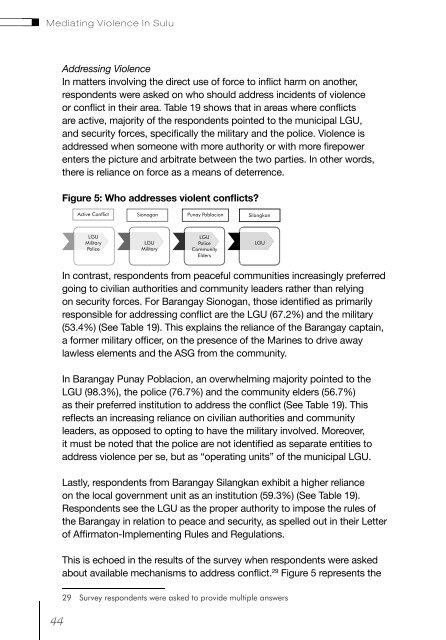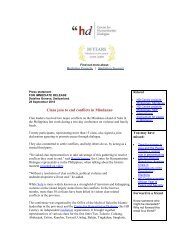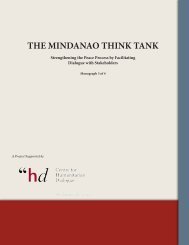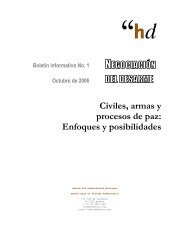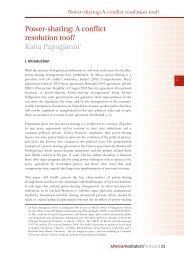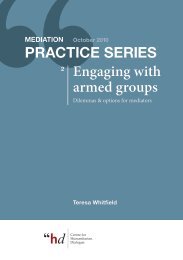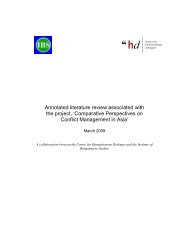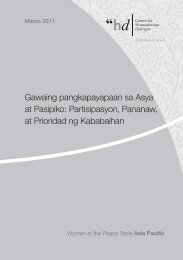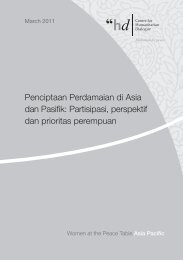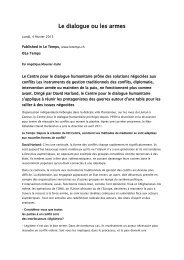Pagpati'ut - Centre for Humanitarian Dialogue
Pagpati'ut - Centre for Humanitarian Dialogue
Pagpati'ut - Centre for Humanitarian Dialogue
Create successful ePaper yourself
Turn your PDF publications into a flip-book with our unique Google optimized e-Paper software.
Mediating Violence In Sulu<br />
Addressing Violence<br />
<br />
respondents were asked on who should address incidents of violence<br />
<br />
are active, majority of the respondents pointed to the municipal LGU,<br />
<br />
<br />
enters the picture and arbitrate between the two parties. In other words,<br />
there is reliance on <strong>for</strong>ce as a means of deterrence.<br />
<br />
44<br />
In contrast, respondents from peaceful communities increasingly preferred<br />
going to civilian authorities and community leaders rather than relying<br />
<br />
<br />
(53.4%) (See Table 19). This explains the reliance of the Barangay captain,<br />
<br />
lawless elements and the ASG from the community.<br />
In Barangay Punay Poblacion, an overwhelming majority pointed to the<br />
LGU (98.3%), the police (76.7%) and the community elders (56.7%)<br />
<br />
<br />
leaders, as opposed to opting to have the military involved. Moreover,<br />
<br />
address violence per se, but as “operating units” of the municipal LGU.<br />
Lastly, respondents from Barangay Silangkan exhibit a higher reliance<br />
on the local government unit as an institution (59.3%) (See Table 19).<br />
Respondents see the LGU as the proper authority to impose the rules of<br />
the Barangay in relation to peace and security, as spelled out in their Letter<br />
<br />
This is echoed in the results of the survey when respondents were asked<br />
29 Figure 5 represents the<br />
29 Survey respondents were asked to provide multiple answers


